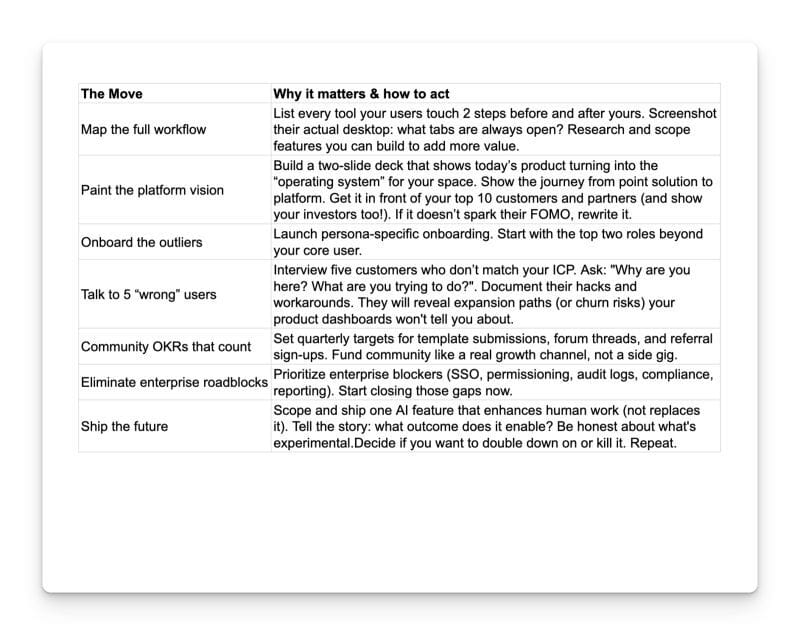- Value x Velocity
- Posts
- 5 growth lessons from Figma's S-1 that every product team needs to know
5 growth lessons from Figma's S-1 that every product team needs to know
How thinking beyond designers and embracing 'bad ideas' created 13 million monthly users.
Everyone in my network is reading Figma's S-1. Started taking notes for my team, then realized these lessons are too good not to share.
1. Think platform, not point solution
Figma launched as a design tool and morphed into the hub for the entire product workflow, including FigJam for brainstorming and Slides for presentations. They're systematically eliminating every reason to leave their ecosystem.
📌 Takeaway: Identify the bigger jobs to be done around your core feature. Build the features, APIs, and partnerships that make your product the place where the valuable and repeatable team work happens. To get started look at what your users do right before and after using your product.
2. Welcome the non-obvious user
Roughly two-thirds of Figma's monthly users aren't designers. PMs, engineers, and marketers jumped in because the experience was frictionless and it made sense for them. Takeaway: Spot the neighboring personas you're missing. Create landing pages, tutorials, and in-product nudges written in their language. Treat community as a growth engine Free libraries, plugins, and a lively forum boosted Figma's virality and brand recognition, and gave instant credibility in a crowded space.
📌 Takeaway: Fund community like it's a growth channel. Because it is.
3. Own the AI conversation even if you're not AI-first
Dylan Field straight up admitted AI will hurt their margins for years. But they're betting big anyway because ignoring it would be worse.
📌 Takeaway: Stop pretending AI won't change your industry. Start shipping. Learn what works.
4. Land small, expand big
The majority of nearly a thousand customers paying six figures a year started as free accounts.
📌 Takeaway: Keep self-serve frictionless while layering in enterprise-grade security, governance, and reporting. Your free tier is your best enterprise salesperson.
5. Surf the next wave early
Browser-based design? That'll never work for real designers. Multiplayer editing? Designers work alone. 13 million monthly users later...
📌 Takeaway: Place small bets on emerging tech (most of which will fail, and that's ok), even when the ROI slide is fuzzy. And, by the way, what's the obviously bad idea in your industry that might actually be brilliant?
Want to apply some of these learnings ASAP? Here’s a quick action plan for product and marketing teams.

Pick what fits your stage and makes sense, even if it's just one thing (or getting inspired to do your own thing).
Because the teams that win don't have better ideas. They ship faster, learn quicker, and compound those learnings into something that eventually gets described as unfair advantages in the S-1 filing.
P.S. Here's what kept nagging me as I was reading the filing. Is this playbook already obsolete? Figma nailed Web 2.0 collaboration.
But what happens when:
→ AI enables nimble team to build products from scratch?
→ Your main users are AI agents?
The basics (solve real problems, bring value, etc, won't change). But everything else might.